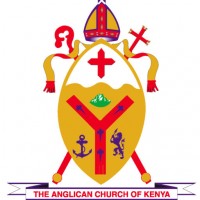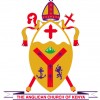OUR HISTORY
The history of the Anglican church of Kenya dates back to 1844 when the first missionary from the Church Missionary (CMS), Dr. Johann Ludwing Krapf arrived in Mombasa. He was joined two years later by Rev. Johann Rebman. The two CMS intended to link a CMS station that was established at Rabai in the coastal region at the same time. The missionaries had to study and learn African languages in order to communicate and spread Christianity. This resulted to Krapf’s translation of the book of Genesis chapter 1-3 in Kiswahili in 1847.
In the same year, Krapf visited Ukambani in an evangelistic exploration while Rebman visited Taita. In 1848, Krapf translated St.Luke’s gospel into Nyika (Rabai) and in 1850, St. Mark’s gospel into Kamba (some local languages). Three years later, Mringe a dying cripple became the first Anglican convert to be baptized. Later a colony was set up by CMS at free town for freed slaves. This became the venue for the baptism of the first Giriama converts. The Diocese of Eastern Equatorial Africa was formed in 1884 and it included Uganda, Kenya and Tanganyika with James Hannington as the first Bishop. One year after, ex-slaves Ishmael Semler and William Jones became the first Africans to be ordained to the Anglican Ministry. In October the same year, Bishop Hannington was brutally murdered on his way to Uganda.
Divinity training for evangelists started in 1889 at CMS, Freetown. Nine years later, the Diocese of Mombasa was formed comprising the vast Kenya’s geographical coverage and Northern Tanganyika. The first CMS missionary A.W McGregor arrived in Kabete in 1900 (currently Central Kenya) and three years later, the first Kikuyu scriptures were published. The Swahili New Testament was completed in Mombasa in 1909 while the first Anglican baptisms in Western Kenya were conducted in Maseno and Kima a year later. In 1900, the Luo community of western Kenya first received the scriptures in “Dholuo”, their own language. The entire Swahili Bible was finally completed in Mombasa in 1914 as the mass movement into the churches in Nyanza and Central Kenya began in 1916.
In 1921 St. John’s Church Nairobi located at Jackson Road (currently Parliament grounds) moved to Pumwani. In replacement of St John’s Church, the Highland Cathedral was started and St. Stephen Church Jogoo Road. The Language Translation Centre moved to Peel Gardens which has developed into ACK Language and Orientation School & ACK Nairobi Guest House. The famous Alliance High School, which is one of the country’s leading schools, was inaugurated in 1926 at Kikuyu by the Alliance of protestant missions, with only 26 students. That same year the New Testament, was completed in Kikuyu and Luo.
In the following year, northern Tanganyika was removed from the Diocese of Mombasa, which then covered Kenya only. In 1930, the CMS divinity school was transferred from Freetown to Limuru; the current St. Paul’s United Theological University. In replacement of St.John’s Church, the Highland Cathedral was started and St. Stephen Church Jogoo Road. A year later, Bible churchmen’s Missionary Society began working among the west Suk (Pokot) and the Borana (Marsabit) communities. The first scriptures in Borana and Pokot were completed in the year 1934 and 1936 respectively.
The first visit from the Ruanda Revival team took place in 1937 and meetings were held in Nairobi, Weithaga and Kabete among other places. Thereafter, in 1938 Kenya African Keswick convention was held at Kikuyu, with the Ruanda Revival team as the speakers. In 1943 the Kenya Missionary Council was voted to become the Christian Council of Kenya (CCK). The Kahuhia convention which was to be the first African- organized East Africa revival convention was held in 1947. This movement later spread across Central Africa.
The Union Swahili Bible was completed and published in 1952. In the same year, All Saint’s Cathedral in Nairobi was completed and consecrated. The following year, Church House, also in Nairobi was opened while the Luo Bible was published. In 1954, Anglicans, Presbyterians and Methodists jointly established St. Paul’s United Theological College in Limuru, (currently United Theological University). The first African Bishops of the Anglican Church in Kenya, Festo Olang’ and Obadiah Kariuki were consecrated by the Archbishop of Canterbury in Uganda the following year.
In 1956, Church Army an Evangelistic and social welfare arm of the Anglican Church worldwide began their work in Kenya. The first mothers’ union members were admitted at Kabete church although the mothers’ union organization was founded in 1876 by the English woman Mary Summner. The union was then started in Kenya in 1918 by European ladies. For the purpose of handling finance and property of the Anglican Church, Church Trust was formed in 1957, which is today the Church Commissioners for Kenya (CCK). Also formed in the same year was Christian churches’ educational association (CCEA).
The first Christian Industrial Training Center (CITC) vocational training center for development of skills for school graduates was began at Pumwani, Nairobi in 1959. In the following year, the Anglican province of East Africa, comprising of Kenya and Tanganyika was formed with L.J. Beecher as the first archbishop. In the same year, the United Parish of Lavington was created.
In 1961 marked the creation of Dioceses of Fort Hall, Maseno and Nakuru which were separated from the large Diocese of Mombasa. 1962 the formation of Diocesan Missionary Association took place in the Dioceses of Fort Hall and Nakuru. In 1964, the Diocese of Nairobi was separated from the Diocese of Mombasa. The Kikuyu Bible was published in a single volume two years later, 1966.
The first African Archbishop of the church The Most Rev. Festo Olang’ was elected in 1970. The following year, the Anglican consultative council representing world Anglicanism, held its inaugural meeting in Limuru. Creation of Dioceses of Maseno North and South took place the same year.
In 1974 Imani house, the then headquarters of the Anglican church of Kenya and the Diocese of Nairobi was opened. Today, the headquarters of the church is at the ACK Garden house second floor. In the following year, the conference of Anglican archbishops (Worldwide) was held at Trinity College, prior to the World council of churches 5th assembly in Nairobi. Two years later, partners in mission the Anglican Church held consultations in Nairobi. In 1975 creation of the Dioceses of Mt. Kenya East and South from the Diocese of Mt. Kenya took place.
The martyrdom of the archbishop of Uganda, Rwanda, Burundi and Boga-Zaire, the most Rev. Janan Luwum occurred in 1977. In the same year, the church of the province of Kenya (CPK) took the lead in soliciting for international aid for refugees. The conference of the archbishops of Anglican provinces in Africa was held in Nairobi. The conference of Anglican province in Africa (CAPA) was inaugurated in July the same year. The most Rev. Dr. Manasses Kuria was elected the second Archbishop of the church, to succeed the most Rev. Festo Olang’ in 1980. A year later, the 2nd partners in mission consultation of the CPK was held in Mombasa while the 3rd was held in Kabare in 1988.
In 1994 the church of the province of Kenya CPK celebrated the 150th Anniversary since the arrival of Dr. Johann Ludwig, who was the first CMS missionary in Mombasa. The Archbishop of Canterbury the most Rev. George Carey joined them in the celebrations.
In 1996, the most Rev. Dr. Manasses Kuria retired. In 1998 The Most Rev. Dr. David Gitari was elected the third Archbishop to take his place. 1998, marked a significant year when the name of the church was changed from the Church of the Province of Kenya to the Anglican Church of Kenya (ACK).
In the year 2003, the Most Rev. Benjamin Nzimbi was elected as fourth Archbishop replacing the Most Rev. Dr. Gitari. In 2009, Archbishop Dr. Eliud Wabukala was elected to succeed Archbishop Emeritus Benjamin Nzimbi. Archbishop Wabukala retired in 2016 and was succeeded by the Most Rev. Dr. Jackson Ole Sapit who was enthroned on the 3rd of July 2016.
Today the Anglican Church of Kenya has grown tremendously from a few members scattered around the coastal region to over 5 million across the country.
Through the years, the church has established 39 Dioceses, several institutions and theological colleges. The Anglican Church is also a member of the 70 million strong Anglican Communion.


